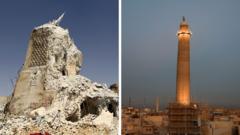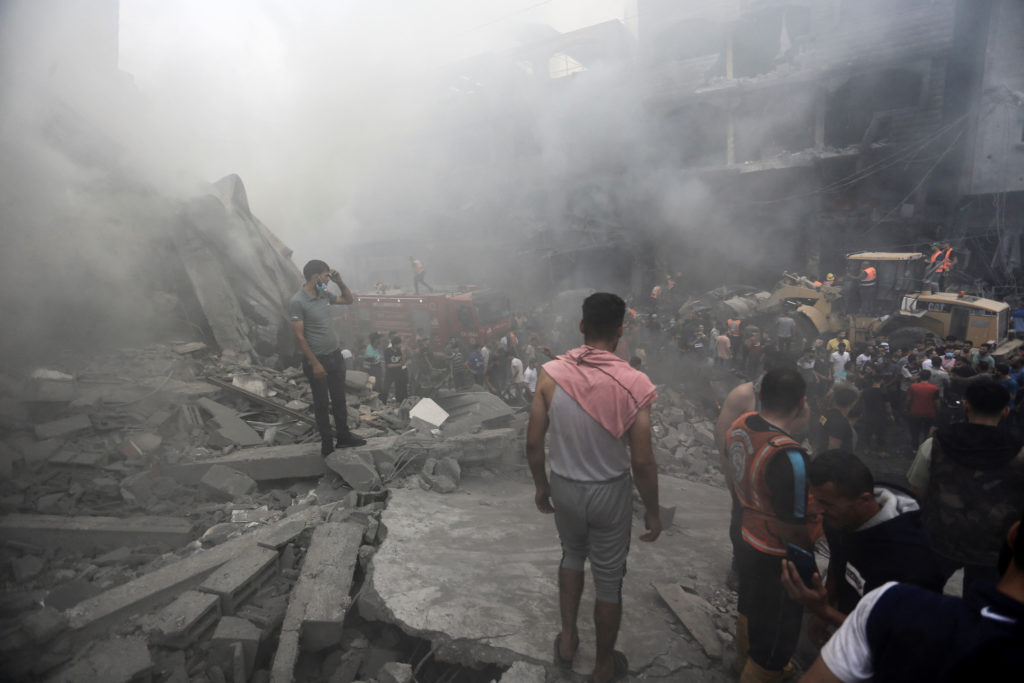In a remarkable turn of events, Mosul is experiencing a renaissance as its historic landmarks are being restored and reopened after suffering extensive damage due to the brutal occupation by the Islamic State (IS) group. The project, spearheaded and funded by UNESCO, kicked off shortly after IS was ousted from the city in 2017, marking a significant step towards healing the community.
UNESCO’s director-general, Audrey Azoulay, recently attended a ceremony celebrating this milestone alongside local artisans and representatives from the diverse religious communities that call Mosul home. The once culturally rich city had been turned into a battlefield, with IS targeting religious minorities and imposing their extremist ideology during their control from 2014 to 2017.
Photographer Ali al-Baroodi remembers the devastation, describing the aftermath as “a ghost town.” The iconic leaning al-Hadba minaret and the historic al-Nuri mosque were left in ruins, yet hope began to emerge with a budget of $115 million raised from various international donors, including the UAE and the EU.
One local leader, Father Olivier Poquillon, emphasized the importance of community trust in rebuilding efforts, stating, “If you want to rebuild the buildings you've got first to rebuild trust.” Architectural restoration involved local craftspeople and has revived not just structures but community bonds. Over 1,300 young locals trained in traditional skills have contributed to the reconstruction work, fostering a sense of purpose and identity.
More than just bricks and mortar, this restoration signifies a rebirth for Mosul, aiming to restore hope amidst ongoing regional instability. As familiar sounds return to the streets, like the chimes of restored churches, residents are beginning to come back home. Abdullah, whose family has lived in the Old City for generations, expressed his joy at returning to his reconstructed house.
Despite the scars left by conflict, the revitalization of Mosul’s cultural heritage symbolizes a resilient spirit ready to look toward a brighter future. The restoration projects resonate deeply with the city's history, showcasing that through unity and commitment, the past can guide the journey to recovery and healing.



















